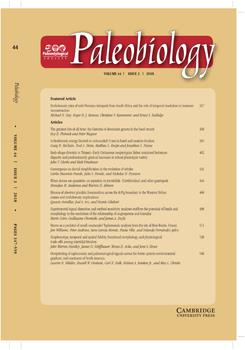Comprising Holostei and Teleostei, the ∼ 32,000 species of neopterygian fishes are anatomically disparate and represent the dominant group of aquatic vertebrates today. However, the pattern by which teleosts rose to represent almost all of this diversity, while their holostean sister-group dwindled to eight extant species and two broad morphologies, is poorly constrained. A geometric morphometric approach was taken to generate a morphospace from more than 400 fossil taxa, representing almost all articulated neopterygian taxa known from the first 150 million years—roughly 60%—of their history (Triassic-Early Cretaceous). Patterns of morphospace occupancy and disparity are examined to: (1) assess evidence for a phenotypically “dominant” holostean phase; (2) evaluate whether expansions in teleost phenotypic variety are predominantly abrupt or gradual, including assessment of whether early apomorphy-defined teleosts are as morphologically conservative as typically assumed; and (3) compare diversification in crown and stem teleosts. The systematic affinities of dapediiforms and pycnodontiforms, two extinct neopterygian clades of uncertain phylogenetic placement, significantly impact patterns ofmorphological diversification. For instance, alternative placements dictate whether or not holosteans possessed statistically higher disparity than teleosts in the Late Triassic and Jurassic. Despite this ambiguity, all scenarios agree that holosteans do not exhibit a decline in disparity during the Early Triassic–Early Cretaceous interval, but insteadmaintain their Toarcian–Callovian variety until the end of the Early Cretaceouswithout substantial further expansions.After a conservative Induan–Carnian phase, teleosts colonize (and persistently occupy) novel regions of morphospace in a predominantly gradual manner until the Hauterivian, after which expansions are rare. Furthermore, apomorphy-defined teleosts possess greater phenotypic variety than typically assumed. Comparison of crown and stem teleost partial disparity indicates that, despite a statistically significant increase in crown teleost disparity between the Late Jurassic and earliest Cretaceous, stem teleosts remained important long-term contributors to overall teleost disparity during this time.
How to translate text using browser tools
26 April 2018
Body-shape diversity in Triassic–Early Cretaceous neopterygian fishes: sustained holostean disparity and predominantly gradual increases in teleost phenotypic variety
John T. Clarke,
Matt Friedman
ACCESS THE FULL ARTICLE

Paleobiology
Vol. 44 • No. 3
Summer 2018
Vol. 44 • No. 3
Summer 2018




